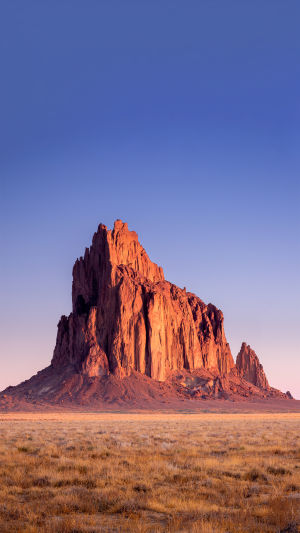The seemingly dead desert has a unique charm of its own.
There are various reasons for the formation of deserts, the main ones being:
1. They are under the control of subtropical high pressure all year round and precipitation is scarce, as in the case of the Kalahari Desert in southern Africa.
2. They are deep inland, where water vapor from the sea cannot enter. For example, the Taklamakan Desert.
3. It is the distribution of air pressure that prevents warm and humid air currents from reaching it. There is only one example of this, the Thar Desert, on the southern border between India and Pakistan.
4. It is influenced by dry trade winds all year round. There are two sub-causes, one of which is that the trade winds come from inland and lack water vapor (e.g. the Arabian Desert). The second is that the trade winds come from the sea, but cross the mountains and come down the leeward slopes (e.g. the Great Sandy Desert in Australia).
5. Deserts are caused by the cooling of cold currents. For example, the deserts along the Somali coast. Many deserts are the result of a combination of factors.
Apart from arid climatic conditions and deforestation, the wind is the driving force behind the creation of deserts, sand is the material basis for their formation and drought is the necessary condition for their emergence.
The wind blows away the sand from the ground, leaving the earth with a rocky crust, or just gravel, which becomes a desolate plain. The sand that has been blown away forms dunes when the wind dies down or when obstacles are encountered, covering the ground and creating a desert.
But the most beautiful landscapes are often found in isolated, dry places, magnificent views of sand dunes, and endless sun-reflecting salt lakes are just the tip of the many desert landscapes to explore.
1. McMurdo Dry Valley
Although the McMurdoogan Valley is located in Antarctica, it is an ice-free place with an annual precipitation of 200 mm. It is the most "ferocious" desert on the continent because of its gravity winds, which can reach 320 kilometers per hour, and its ability to evaporate water. The McMurdo Dry Valley is the most similar place on Earth to Mars.
2. Valley of the Moon
Chile is home to the Valley of the Moon, a landscape that was formed after centuries of flooding in the region. It is called the "Valley of the Moon" because of its rocky formations, which resemble the surface of the moon, and huge sand dunes. The light reflected by the salt layer gives the Valley of the Moon its red, yellow, green, and bright blue colors.
3. Wadi Rum Valley
Jordan's Wadi Rum Valley is home to wildlife and rocky outcrops. The Wadi Rum Valley is ideal for adventurers as it has the second-highest mountain peak. Those wishing to visit the Wadi Rum Valley can choose to travel through the desert on camel or horseback and camp under the stars.
4. Pinnacles Desert
Located in the Nambung National Park in Western Australia. The strange finger-like structures of limestone in the Pinnacles Desert create unusual and mysterious images. Due to the movement of the sun, these rock formations appear as creepy shadows in the desert.
This is also the home of wildflowers, and it is these that amplify the charm of the area between August and October.
5. Death Valley
Death Valley is the hottest and driest desert in North America. The diversity of the landscape, with its rolling snow-capped mountains and sand dunes of all colors, makes it a unique place in the USA. There you can find bewilderingly moving rocks and a beautiful Zabriskie Point.
8. The Chebbi dunes
The high sand dunes in the Sahara desert, which reach up to 150 meters high, are one of the most attractive places in Morocco. This attraction begins in a small village and is best known for being traveled by camel trekking, which can, of course, be rather uncomfortable.
7. Nazca Desert
The Nazca Desert is famous for its Nazca Lines, created between 200 BC and 700 AD. They were not discovered until the 1920s when Peruvian Airlines flew from Lima to Arequipa. These lines are between Palpa and Nazca.
These lines are the subject of figure paintings, lizard paintings, fish paintings, puma paintings, monkey paintings, and spider paintings. Due to the dry and windless climate of the Pacific coast, these lines have never been covered.
8. Sinai Desert
The Sinai Desert, on the border near Egypt, is popular with tourists not only for its culture but also for its picturesque landscapes. The contrast between the blue sky and the golden sandy beaches makes for a perfect landscape. The desert is also connected to the Red Sea.
9.Sousse Ri
Sousse Ri is one of the famous attractions. A large expanse of colored sand dunes with a large clay pan in the middle. The Zocheab River irrigates the plants that grow in the area. The desert winds shape the dunes and change their structure over time. With each sunset and sunrise, the dunes change their color, giving the photographer the perfect shot.





